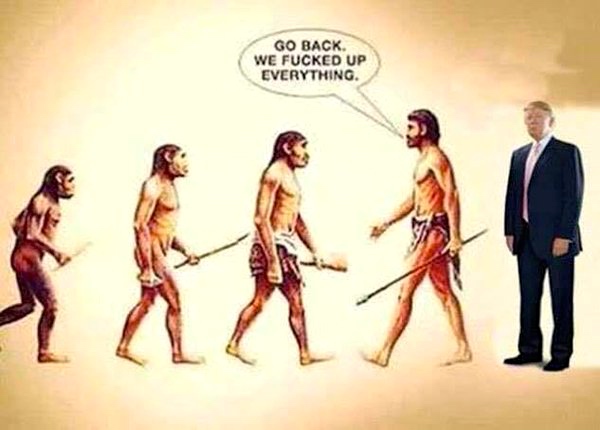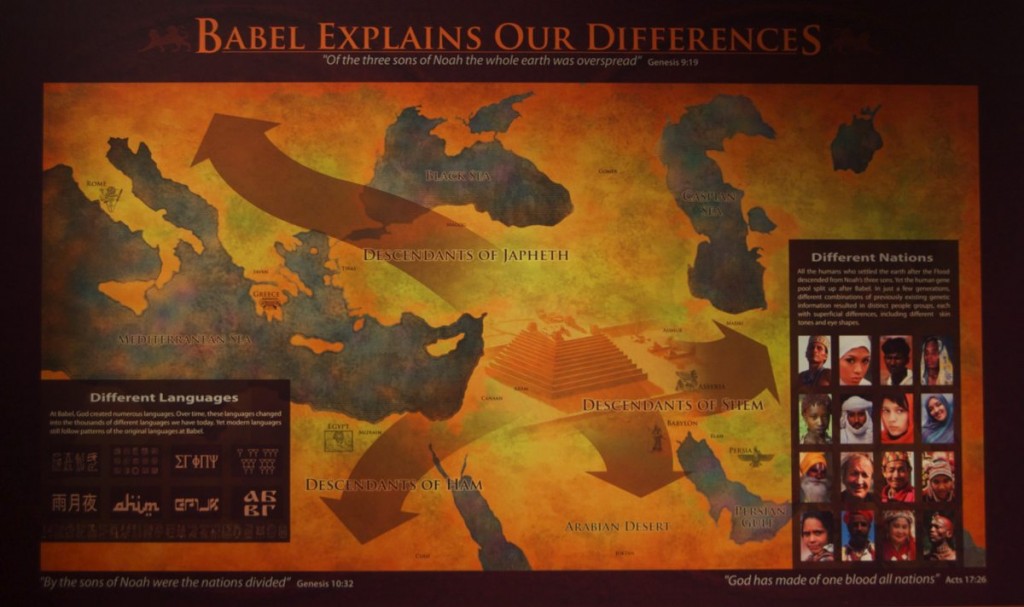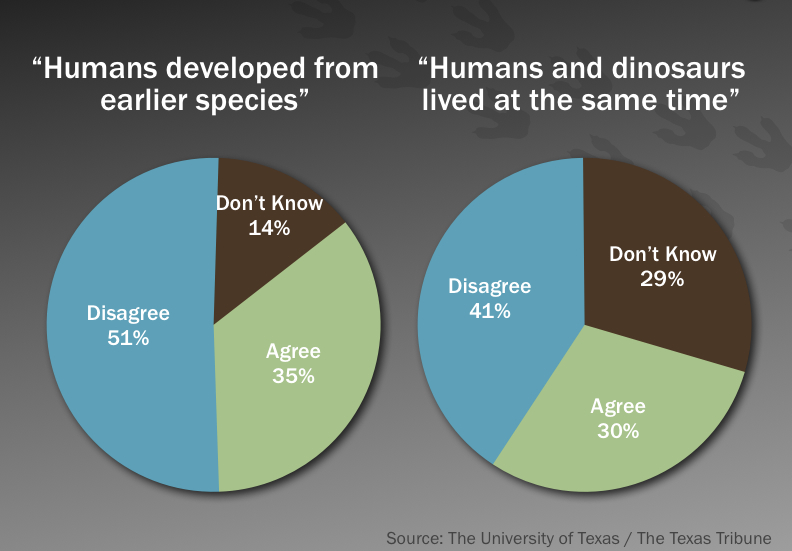Last-Minute Changes. Scientific orthodoxy says that human evolution stopped a long time ago. Did it? (Wall Street Journal, February 12, 2009) Christopher Chabris ‘psychology professor at Union College in Schenectady, N.Y.’
Where it is written:
But scientists do disagree over the pace and time-span of human evolution. Gregory Cochran and Henry Harpending begin “The 10,000 Year Explosion” with a remark from the paleontologist Stephen J. Gould, who said that “there’s been no biological change in humans for 40,000 or 50,000 years.” They also cite the evolutionist Ernst Mayr, who agrees that “man’s evolution towards manness suddenly came to a halt” in the same epoch.
Gould and Mayr do not constitute an orthodoxy. There is no orthodoxy that makes the claim Chabris has attached to it.
Evolution doesn’t stop, and it doesn’t stop for the cockroach and the hagfish and those bacteria that are apparently little changed over half-to-a-billion years. So the tag to the headline is a classic strawman. Chabris, you done over heated your pan o’ pablum. The controversy about the pace of human evolution is not very interesting to me personally, but there is no question about, nor orthodoxy suggesting, that the process of evolution can halt itself. It is, as it were, a dumb, albeit dynamic, kind of natural machine. Snails pace or cheetah; likely to vary for a lot of reasons between really really slow and faster. I suppose evolutionary homeostasis sort of happens given specific homeostatic environs, but I don’t know any biologist who claims mutations then halt.
Meanwhile, as long as anthropologists are coming under attack, they’ve earned the dull point of Richard Dawkins’s toy spear. Dawkins on Darwin. Why we really do need to know the amazing truth about evolution, and the equally amazing intellectual dishonesty of its enemies
Here is yet another article I would peg in the vain of post-sokalism. (I hope you get the ref.) Dawkins is (always) exercised at those who would seemingly relevatize scientific truth. He will eventually go off in the article on proponents of pseudo-science, but anthropology earns his ire in this dim section:
A scientist arrogantly asserts that thunder is not the triumphal sound of God’s balls banging together, nor is it Thor’s hammer. It is, instead, the reverberating echoes from the electrical discharges that we see as lightning. Poetic (or at least stirring) as those tribal myths may be, they are not actually true.
But now a certain kind of anthropologist can be relied on to jump up and say something like the following: Who are you to elevate scientific “truth” so? The tribal beliefs are true in the sense that they hang together in a meshwork of consistency with the rest of the tribe’s world view. Scientific “truth” is only one kind (“Western” truth, the anthropologist may call it, or even “patriarchal”). Like tribal truths, yours merely hang together with the world view that you happen to hold, which you call scientific. An extreme version of this viewpoint (I have actually encountered this) goes so far as to say that logic and evidence themselves are nothing more than instruments of masculine oppression over the “intuitive mind
Actually, Richard, scientific truth IS only one kind of truth. However the valency attached to any truth has to do with how it’s kind has been worked out. This inquiry into what are the applications of, and explanatory frameworks for, and what are consistent evaluative regimes, and, pertinent supportive logics and schemes of quantification, theorization, (etc.,) are crucial for the work of biologist and anthropologist and tribe. (Of course the tribesman’s points of emphasis and methodology may be quite different.) The kind posed by scientific truth is required to be scientifically worked out, but other kinds of truth are not required to be scientifically worked out. This isn’t to say science isn’t enabled so as to contest some other kind of truth–it may well be–but those other kinds of truths may also be of a different kind too. And, sorry Richard, but science literally came along in the history and development of, what I will term, sentient empiricism. So it strikes me as banal to suggest that scientific truth is per force superior if you don’t also proscribe the scientific domain and give it a historical qualification too.
I don’t see how relativism poses much of a threat to science. Two things I do know: scientists all the time do good work without being adept at the philosophy of science, and, some kinds of scientific truths are required to be provisional, and in a strong sense are thus relative to future developments.
Anthropologist Maurice Block wrote,
“If culture is the whole or a part what people must know in a particular social environment to operate efficently…” (in Language, Anthropology and Cognitive Science; 1991)
Full stop. Such peoples must know a bunch of unscientific and no less effective truth. Almost everybody is superstitious, hardly anybody is scientific, yet the anthropologist or some other kind of social scientist, may aim at giving an account for the basis of human efficiency given in a particular social environment, and include all sorts of other kinds of truths. These will be the truths the tribe deploys. In doing this, given are the many domains of inquiry that are commensurate with different kinds of tasks of understanding the nature of the tribal truths.
I decry the imposition of pseudo-science, such as creationism, into the science curriculum, but I am also fascinated by what accounts for the social impetus granted in the wish of people to have creationism taught in biology classes. Biology has nothing to say about this social phenomena. Except for polemicists who savage the implicit oddness of humans who are moved to promote pseudo-science.
There is so much long-standing controversy in anthropology and meta-anthropology over the valence of materialism and causal regimes and other knotty problems of reflexivity and stance and culturated bias and, in a word, subjectivities, that I would say to Dawkins, ‘anthropology has its own conundrums.’
(Dawkins) Like tribal truths, yours merely hang together with the world view that you happen to hold, which you call scientific.
This nominalist threat poses no contest to science at all. Yeah, it may be aggravating in the battle for column inches! Scientific truth is true in its well worked out ‘kind,’ or,–better–domain. Also, any anthropologist who maintains that scientists happen to hold a world view needs to explain what he or she means by ‘happen!’. But, who claims this?



